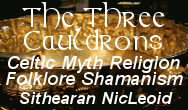Pagan Paths
Hellenismos, otherwise known as Greek Reconstructionist Paganism, is the traditional, polytheistic religion of ancient Greece, reconstructed in and adapted to the modern world. It's a vibrant religion which can draw on a surprising amount of ancient sources. Baring the Aegis blogger Elani Temperance blogs about her experiences within this Tradition.
Hestia versus Dionysos
Ever so often, I get the feeling I really need to write about something specific; references to the topic pop up everywhere, I get asked questions about it, and the desire to write about anything else drops to an all-time low. So here we go: today's blog post is about Hestia and Dionysos, and who has the throne up on snowy Olympos.
There is a story floating about the internet and even some modern texts on Hellenic mythology, that Hestia gave up Her throne to Dionysos. Apparently, this is an ancient myth, and the ancient Hellenes would have believed this as well. It's a story so frequently told, one that is so common-knowledge, that very few people bother to check the source. Well, the source is Robert Graves' 'The Greek Myths', written in 1955. From that book (27.12):
The most canonical version of the Dodekatheon is represented in the relief above, currently located at the Walters Art Museum. The relief dates back to the 1st century BC to the 1st century AD and depicts the Twelve Olympians carrying their attributes in procession: from left to right, Hestia (scepter), Hermes (winged cap and staff), Aphrodite (veiled), Ares (helmet and spear), Demeter (scepter and wheat sheaf), Hephaestus (staff), Hera (scepter), Poseidon (trident), Athena (owl and helmet), Zeus (thunderbolt and staff), Artemis (bow and quiver), and Apollo (cithara). No mention of Dionysos.
As a Traditional Hellenist, I place Hestia on Her throne, where she belongs, but this does not mean I do not welcome Her into my home, that I feel She does not occupy the heart(h) of the house, that I do not tend Her flame, or that I do not offer to Her first and last whenever I make a sacrifice; She walks amongst mortals for sure, but that does not mean She does not voice Her opinions to the other Theoi from Her golden throne on Mount Olympos. It also does not mean that I feel Dionysos is in any way a lesser deity; He is a beautiful Theos with a wide domain, who was of vital importance to the ancient Hellenes. Just look at the Anthesteria.
Which position you take is up to you, of course, but I feel it is important to know where your believes find their base. I believed Graves' version of the Dodekatheon for years before discovering it was a modern invention. For me, that was enough to change my views, for others it might not be. The ancient Hellenes did not have a consensus on this, so I see no reason for us to come to one either. Still, the facts matter, so here they are.
Comments
-
Please login first in order for you to submit comments





















Thanks for sharing!
Aetius